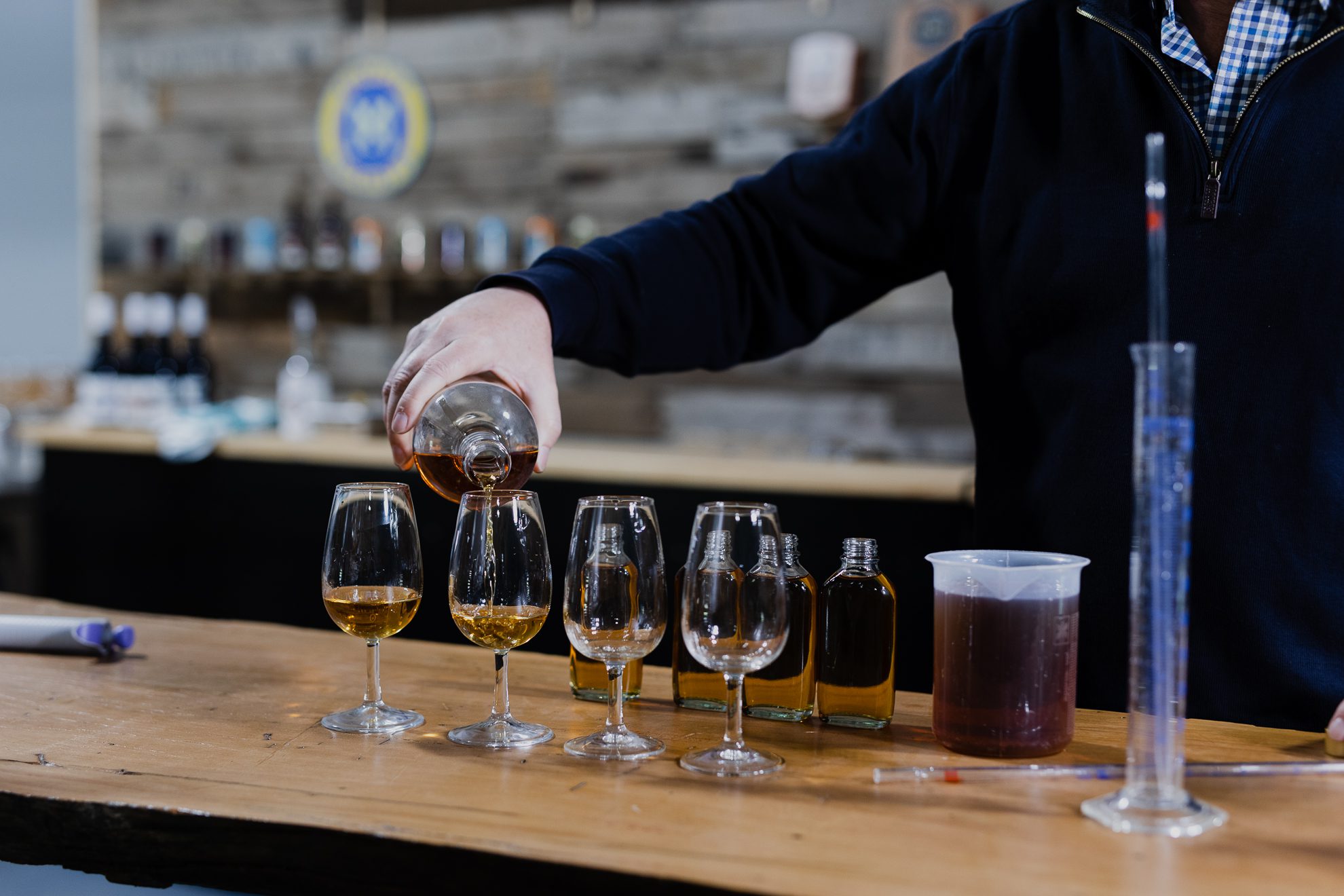
We are constantly assessing our operations and looking at ways that we can further close the loop, ensuring that we make the most of every resource we use. This means taking a careful look at the lifecycle of each material and finding ways to use it efficiently and repeatedly.
We take a closed-loop approach to as many aspects of our operations as possible, such as spent grain waste being used as stock feed. However nowhere is this approach as vital as it is in our use of water.
One area where this is particularly important for us is water. We’ve implemented a closed-loop water cycle in our operations that involves several steps:
- We pump water from the aquifer using our onsite bore.
- This water is then thoroughly cleaned and purified through two filters and a Reverse Osmosis treatment at our wastewater plant.
- Once cleaned, the water is used in our production process.
- After use, any wastewater goes down the distillery drainage.
- The solids are removed from the wastewater.
- The wastewater then enters our wastewater treatment plant, where it is further cleaned in a Bio-Reactor.
- The clean water is directed to our dam.
- From the dam, the water is used to irrigate our orchards, strawberries, and gardens.
- As the water travels through the ground, it undergoes additional filtering before returning to the aquifer, starting the cycle anew.
We also make sure to incorporate any waste outputs, including solids, from the wastewater treatment process into our composting program, which is, in turn, used on our kitchen garden and neighbouring crops.
While we strive to apply a closed-loop approach to all aspects of our operations, our treatment of water is particularly important to us. It’s about being responsible stewards of our resources and ensuring a sustainable future for generations to come.
“We take a closed loop approach to as many aspects of our operations as possible, such as spent grain waste being used as stock feed. However nowhere is this approach as vital as it is in our use of water. ”













